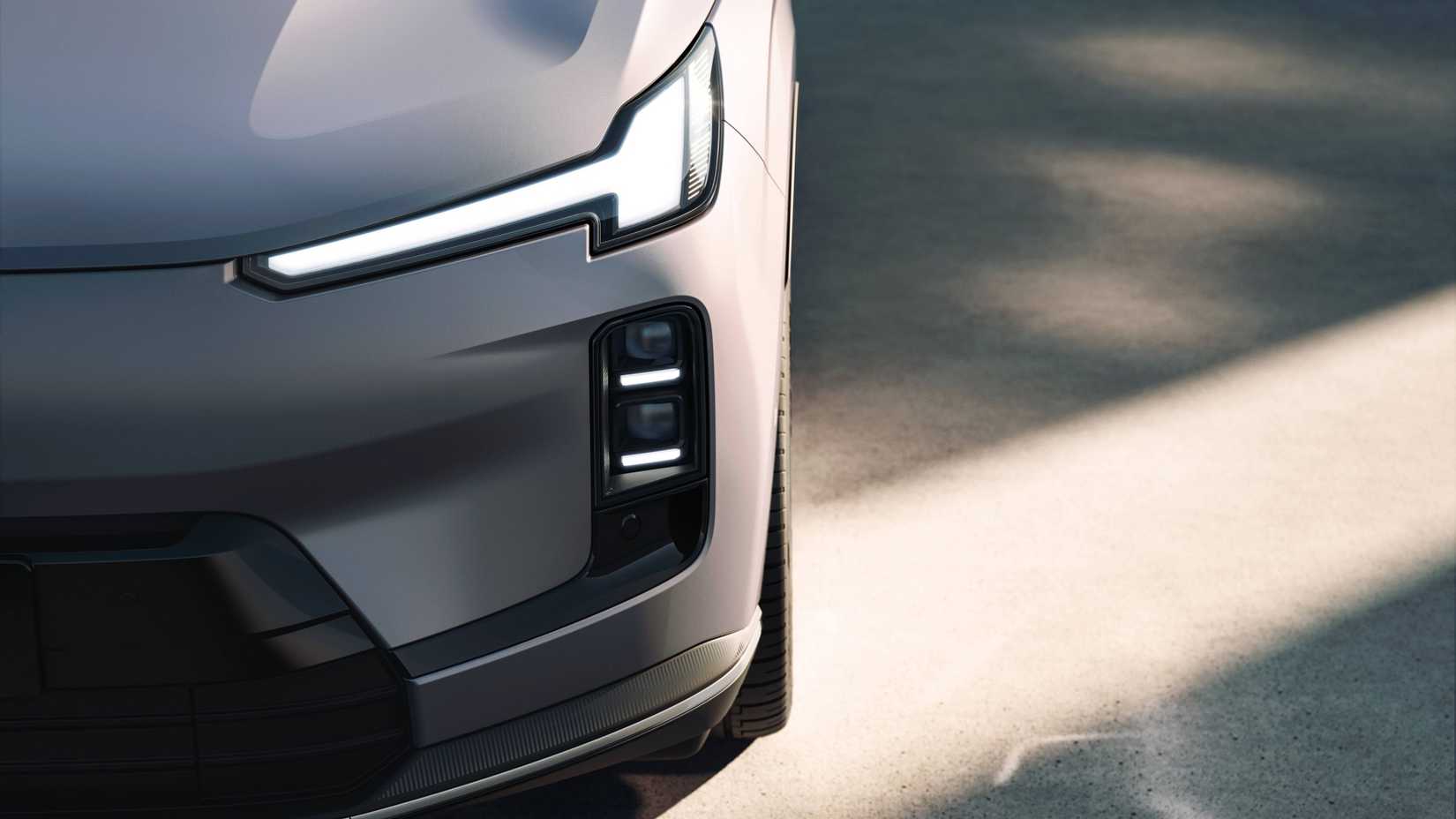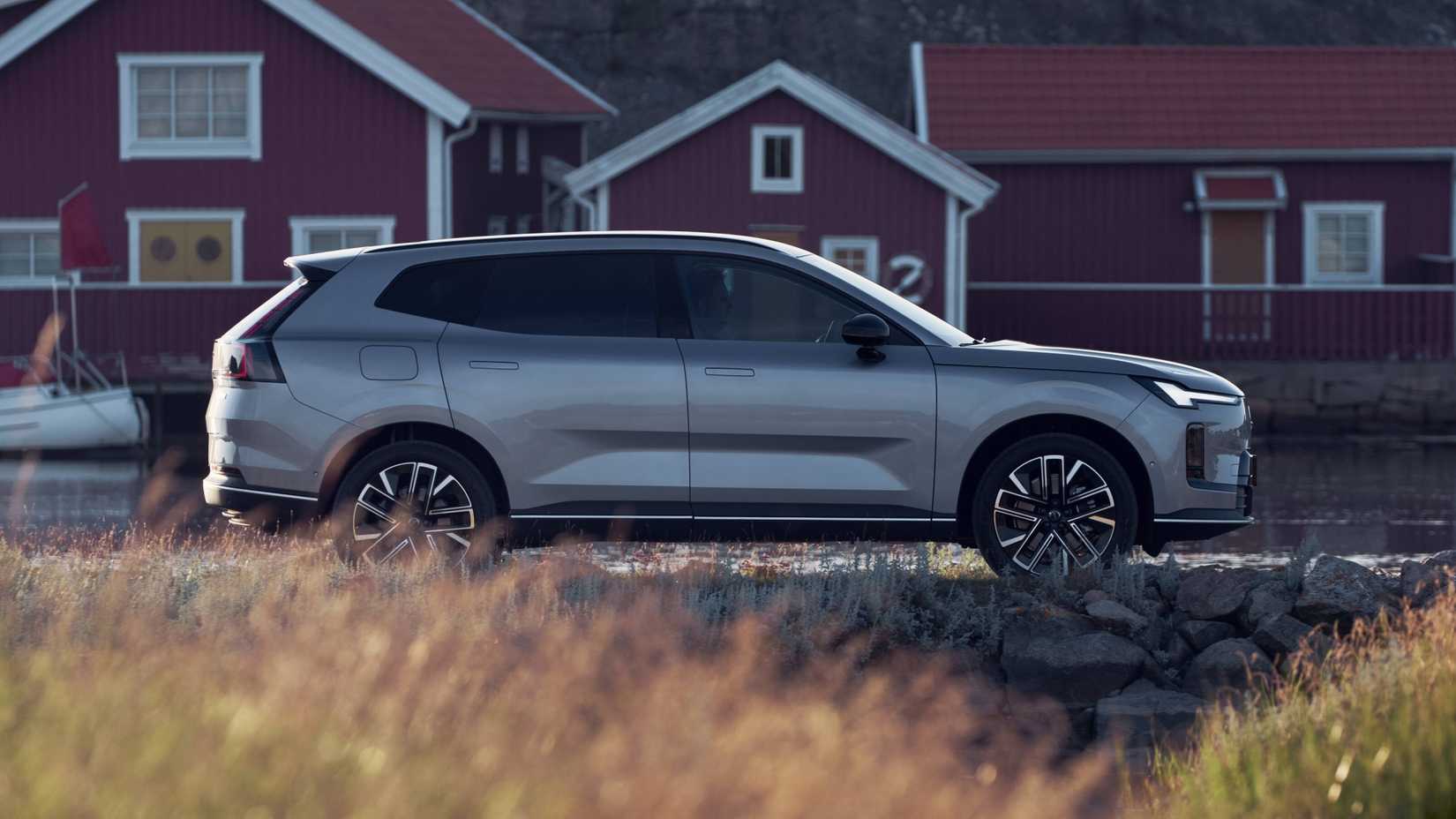Long before it offered an SUV, Volvo made off-road inroads with the V70 Cross Country, a lovable, boxy, lifted station wagon that was renamed XC70 for its second generation. The Swedish automaker will revive that nameplate for the 2026 model year, but unfortunately for longroof lovers, the new XC70 is avowedly a crossover. That said, it does have a few tricks up its sleeve, like a chic, minimalist interior and a plug-in hybrid powertrain that’ll do 124 miles on electric power before the gas engine kicks on. But despite Volvo’s long-in-tooth U.S. lineup, don’t plan on seeing this PHEV here anytime soon – it’s a Chinese-market model for now.
Volvo’s First Long-Range Plug-In
Volvo calls the 2026 XC70 a long-range PHEV, which, as its name suggests, has more range than most other plug-ins. For example, Volvo’s longest-range PHEV in the U.S. market is currently the S90 sedan, and it travels 38 miles on a charge before the gasoline engine kicks on and the car operates as a conventional hybrid. The XC70, however, can travel on pure electric power for up to 200 kilometers (124 miles) on the CLTC scale, an optimistic rating that still would result in 80 or 90 miles if the crossover were tested by the EPA. Volvo claims a total range of 745 CLTC-rated miles between gas and electricty. Mind your bladder health.
In our previous reporting on the crossover, Volvo’s CEO and President Håkan Samuelsson said the XC70 would be the automaker’s first extended-range EV, although in truth, the crossover’s gasoline engine does provide power to the wheels in some circumstances – EREVs tend to have the internal-combustion mill generate electricity only. Reading a translated version of Volvo’s Chinese consumer website suggests that in most cases, the engine will act as a generator, but in some high-performance situations, it will send power to the wheels.
Powertrain specifics are light in Volvo’s press release, but the consumer site for the XC70 shows that it offers two different propulsion options. In two-wheel-drive form, the engine and front-mounted electric motor provide a healthy 318 horsepower, while the 21.2-kilowatt-hour lithium-ion battery provides around 80 miles on electric power. The four-wheel-drive model has two motors on the rear axle and one on the front, giving it a total of 462 hp, while a larger 39.6-kWh battery allows it to travel the aforementioned 124 miles. The internal combustion component is the same turbocharged 1.5-liter four-cylinder found in the XC70’s Chinese cousin, the Lynk & Co. 08.
Electric-Inspired Styling Inside And Out
As a testament to the XC70’s EV aspirations, it borrows the EX90’s smooth front fascia that does without a traditional grille opening, while a shuttered front bumper intake cleans up aero when cooling capacity isn’t required. Thor’s Hammer LED accent lights appear just beneath the clamshell hood, with a quartet of LED headlamps on the front bumper.
Hidden door handles provide an impossibly smooth side profile, and the chamfered surfacing above the rocker panels ties the XC70 in with the cutesy EX30 EV. Vertical taillights – another longstanding Volvo design cue – dovetail into the hatch glass with an intricate, hatched design. That said, some might cry foul that the XC70 is virtually indistinguishable from some angles to the aging XC60 crossover.
Moving inside, Volvo seems to have learnt its lesson from the EX30, because the XC70 has a 12.3-inch digital instrument cluster that’s separate from the 15.4-inch center touchscreen. The interior is still suitably Scandinavian (read: minimalist), with a low dashboard, subtly integrated air vents, and an understated speaker design for the Harman Kardon audio system. Open storage beneath the center console and a large armrest cubby should provide enough spots to stash your stuff, long a hallmark of Volvo’s thoughtful cabin designs.
Made In China, Destined For Europe, Forbidden In America
The 2026 Volvo XC70 will be built in Taizhou, China, on the company’s Scalable Modular Architecture, which is an evolution of the Compact Modular Architecture that lives under the smaller XC40. Pre-orders are open to Chinese customers right now, and the XC70 starts at 446,900 yuan ($62,469 at current exchange rates). Volvo says it intends to eventually offer the XC70 in its home European market, but odds of an American release are slim to none, at least in the crossover’s current form. Chinese cars are currently subject to a tariff of more than 100 percent, meaning that plug-in hybrid Volvo would cost six figures if it were imported across the Pacific Ocean.
Given Volvo’s somewhat stale U.S. lineup, we’d love to see something like the XC70 at local dealerships sometime in the future. It would probably have to be redesigned for our market and then produced at the South Carolina assembly plant that builds the EX90 three-row EV, but if that’s what it takes to get a long-range PHEV, then we hope Volvo is willing to take the plunge.



